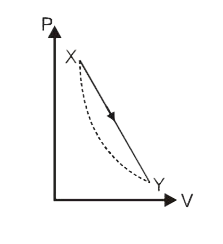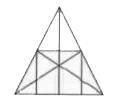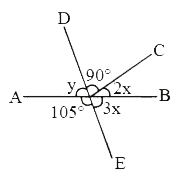In the P-V diagram below the dashed curved line is an adiabatic. For a process that is described by a straight line joining two points X and Y on the adiabatic (solid line in the diagram) heat is: (hint: Consider the variations in temperature from X to Y along the straight line)

Absorbed throughout from X to Y
Released throughout from X to Y
Absorbed from X up to an intermediate point 2 (not shown in the figure) and then released from Z to Y
Released from X up to an intermediate point Z (not shown in the figure) and then absorbed from Z to Y
The correct Answer is:C
Absorbed from X up to an intermediate point 2 (not shown in the figure) and then released from Z to Y
Topper's Solved these Questions
- BOOK - ERRORLESSCHAPTER - THERMODYNAMICSEXERCISE - PAST YEARS QUESTIONS22videos
THERMODYNAMICS
- BOOK - ERRORLESSCHAPTER - THERMODYNAMICSEXERCISE - ASSERTION AND REASON20videos
THERMODYNAMICS
- BOOK - ERRORLESSCHAPTER - THERMODYNAMICSEXERCISE - NCERT BASED QUESTIONS (ISOBARIC AND ISOCHORIC PROCESS)10videos
THERMODYNAMICS
- BOOK - ERRORLESSCHAPTER - SURFACE TENSIONEXERCISE - ASSERTION & REASON11videos
SURFACE TENSION
- BOOK - ERRORLESSCHAPTER - THERMOMETRY, THERMAL EXPANSION AND CALORIMETRYEXERCISE - ASSERTION & REASON10videos
THERMOMETRY, THERMAL EXPANSION AND CALORIMETRY
Similar Questions
Knowledge Check
- Question 1 - Select One
In the P-V diagram below the dashed curved line is an adiabat.

For a process that is described by a straight line joining two points X and Y on the adiabat (solid line in the diagram) heat is : (hint : Consider the variations in temperature from X to Y along the straitght line)Aabsorbed throughtout from X to YBreleased throughout from X to YCabsorbed from X up to an intermediate point Z (not shown in the figure) and then released from Z to YDreleased from X up to an intermediate point Z (not shown in the figure) and then absorbed from Z to Y - Question 2 - Select One
How many straight lines are contained in the diagram given below ?
 A9B10C11D12
A9B10C11D12 - Question 3 - Select One
The ratio by which the line 2x + 5y -7=0 divides the straight line joining the points (-4,7) and (6,-5) is
A1:4B1:2C1:1D2:3
The integration of y from xo to 4x0, along straight line shown in diagram
View SolutionA particle is moving along a straight line whose v-s graph is shown, the dashed line is tangent to the curve. The magnitude of acceleration is ( in m/s2)
View SolutionDetermine the area of the figure bounded by two branches of the curve (y−x)2=x3 and the straight line x=1
View SolutionIn a figure , AB is a straight line , Find (x+y):
 View Solution
View SolutionWhat is the area bounded by the curves y=e^x, y=e^(-x) and the straight line x=1?
View Solution

